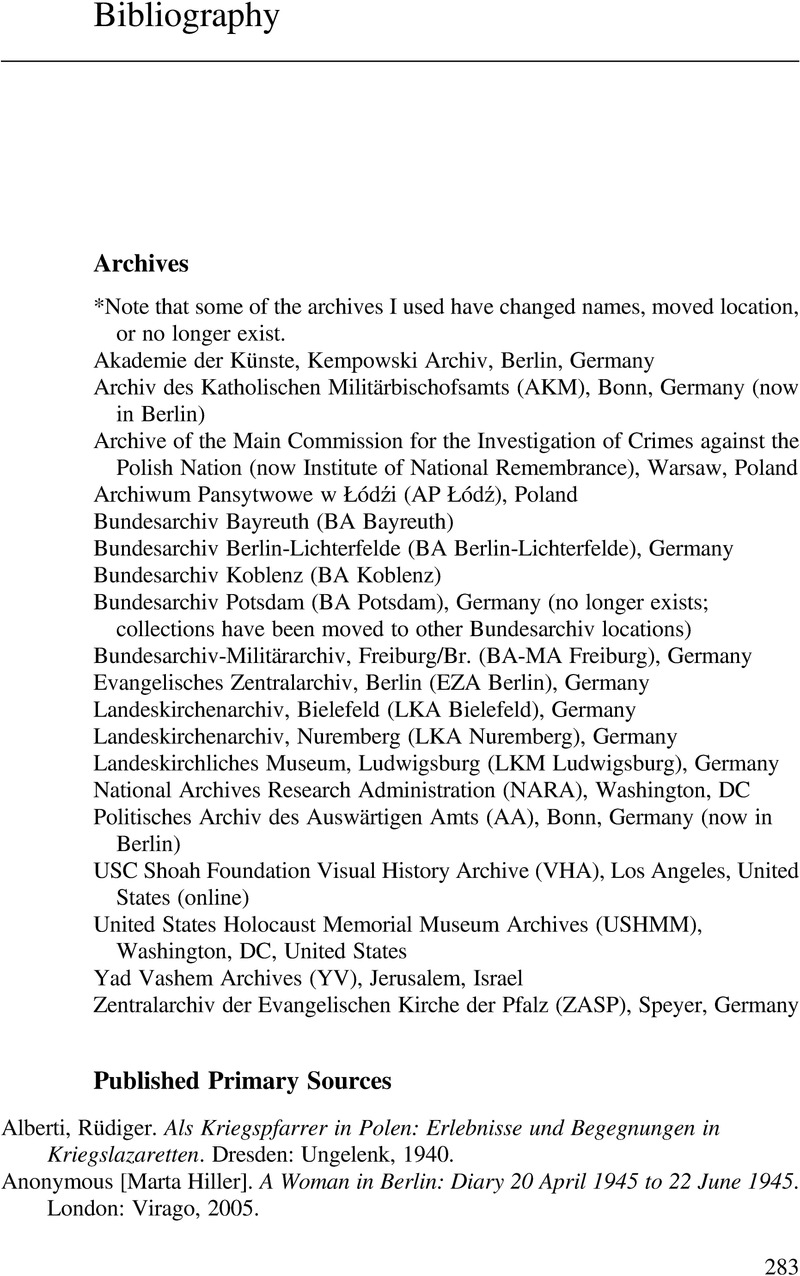Book contents
- Between God and Hitler
- Between God and Hitler
- Copyright page
- Contents
- Figures
- Table
- Preface
- Acknowledgments
- Note on the Text
- Abbreviations
- Introduction
- 1 “We Will Not Let Our Swords Get Rusty”
- 2 “In Times of Peace the Church Arms Herself for War”
- 3 “Gott mit uns”
- 4 Saving Christianity, Killing Jews
- 5 “The Power of Christian Truth and Christian Faith”
- 6 “What Should We Preach Now?”
- 7 From Nazi Past to Christian Future
- Conclusion
- Notes
- Bibliography
- Index
- References
Bibliography
Published online by Cambridge University Press: 14 April 2023
- Between God and Hitler
- Between God and Hitler
- Copyright page
- Contents
- Figures
- Table
- Preface
- Acknowledgments
- Note on the Text
- Abbreviations
- Introduction
- 1 “We Will Not Let Our Swords Get Rusty”
- 2 “In Times of Peace the Church Arms Herself for War”
- 3 “Gott mit uns”
- 4 Saving Christianity, Killing Jews
- 5 “The Power of Christian Truth and Christian Faith”
- 6 “What Should We Preach Now?”
- 7 From Nazi Past to Christian Future
- Conclusion
- Notes
- Bibliography
- Index
- References
Summary

- Type
- Chapter
- Information
- Between God and HitlerMilitary Chaplains in Nazi Germany, pp. 283 - 312Publisher: Cambridge University PressPrint publication year: 2023



